 This little guy doesn’t talk yet, doesn’t walk yet, but he and his friends will be in our classrooms in the next few years. They will be coming to us familiar with how to use a smartphone, a tablet and a computer. Are we prepared to engage him and his classmates with an education that uses the tools and technology that he is growing up with and are fully integrated into his personal life?
This little guy doesn’t talk yet, doesn’t walk yet, but he and his friends will be in our classrooms in the next few years. They will be coming to us familiar with how to use a smartphone, a tablet and a computer. Are we prepared to engage him and his classmates with an education that uses the tools and technology that he is growing up with and are fully integrated into his personal life?
Thus begins a typical attention getting opener I frequently use in presentations. Despite the fact, that the smartphone and similar technology are as commonplace, if not more so, than the ink pen and the pencil, there continues to be significant debate about the integration of modern technology in the educational process. Nevertheless, the technological shift is in place. The full implementation of screen and cloud based technology along with a shift in pedagogy, as well as an understanding of the skills today’s student needs to be successful for a career that will take them through 2075 before they retire, are being solidified.
It is with this in mind that I appreciate opportunities to lead and participate in discussions about the current revolution in education. I enjoy bringing presentations to other educators that support this shift. The process of preparing and researching the nuances to fit each education community I get to work with makes me a better educator. Over the past couple of days, I’ve been preparing to guide a predominately hispanic district in California through some discussions about their use of and vision for modern tools in education. As I prepared, I searched for images of a “Mexican toddler using technology.” Here’s an example of what popped:
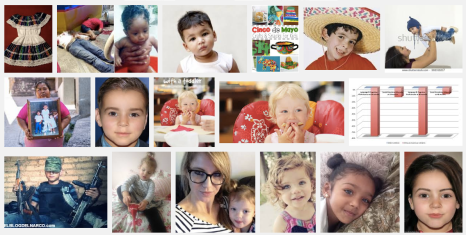
As both an educator and the parent of a mixed race, hispanic son, I was shocked!
I decided to search for “white toddler using technology.” Notice the distinct difference in images:
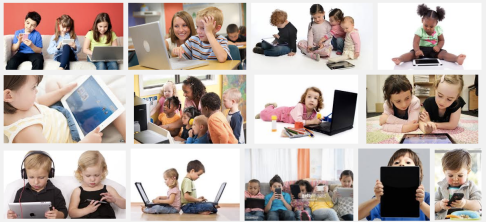
The educator in me is stunned, the parent in me can hardly breathe.
“Okay,” I think to myself, “be a little more politically correct with your search term and see what happens with ‘hispanic toddler using technology’.”
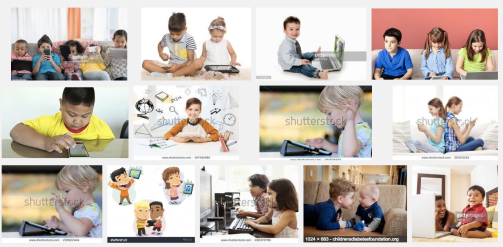
I’m thinking, “Better, but do my eyes deceive me or are most of these images still of white children?”
Well, as long as I’ve started down this path…”black toddler using technology.”
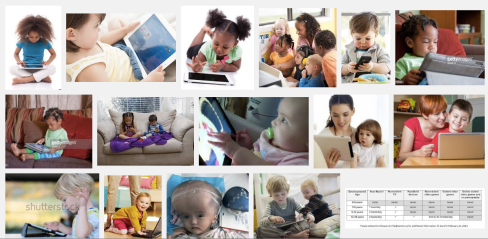
“Asian toddler using technology”
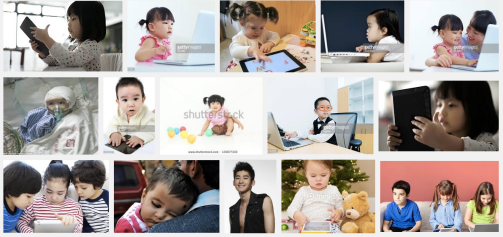
What was intended to be a quick Google search turned out to have a far more profound effect on my already strong belief around the importance of the work we do in regard to equity in education. The images speak loudly. Our societal perceptions and expectations are clearly captured. What started as “a quick Google search” has become a personal call to action.
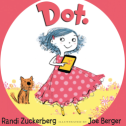 I read the book Dot by Randi Zuckerberg and Joe Berger to our kindergarten students this past year. It is a wonderful book that uses multiple meaning words such as “surfing, tweeting, swiping, tagging” to highlight a balance of spending time with technology and playing outdoors. Yes, the main character is white and no, I haven’t been able to find an equivalent book using characters of other races. Nevertheless, the story and the message are enjoyable and on point in emphasizing the importance of balancing screen time with outdoor play and discovery.
I read the book Dot by Randi Zuckerberg and Joe Berger to our kindergarten students this past year. It is a wonderful book that uses multiple meaning words such as “surfing, tweeting, swiping, tagging” to highlight a balance of spending time with technology and playing outdoors. Yes, the main character is white and no, I haven’t been able to find an equivalent book using characters of other races. Nevertheless, the story and the message are enjoyable and on point in emphasizing the importance of balancing screen time with outdoor play and discovery.
My school district enjoys being a distinctly multi-racial community and our kindergarten class shows this diversity with it’s mix of black, hispanic and white students. Despite, what the Google image search showed for technology use by toddlers from a variety of races, when our kindergarten students were asked who used a smartphone or a tablet at home, 100% of the class raised their hand. When asked what the difference is between “tagging” on a device and on the playground, two of of our hispanic students provided very clear examples of the difference of their parents tagging friends on Facebook and playing a game of tag on the grass.
Knowing that our district, our community and our parents are clearly providing more equal access than what the Google image search would indicate society perceives, alleviates some of the emotional fire I felt during this search. Reflecting on the environments and communities that most of my colleagues work in took a little more sting out of the feeling. Yet, it does not alleviate the concern around the reality we know to still exist in regard to equal access, parental use of devices to support educational applications vs. video gaming and entertainment watching. The concern about the power images hold to set expectations and influence societal realities exists very strongly.
Let us all be a part of a call to action in the shift of equity in education as we navigate the impact of the technological revolution. Let us each use this opportunity to provide equal access to modern tools to support the educational process, to provide equal access to and understanding of how to use these tools. Let us all take part in shaping our culture, its perceptions and its expectations so that an image search shows equity in the opportunities and access provided for children. As we prepare the next generation of citizens, let our students, who will be retiring in 2075, experience life in a society that provides equal access and equal opportunity regardless of race.
